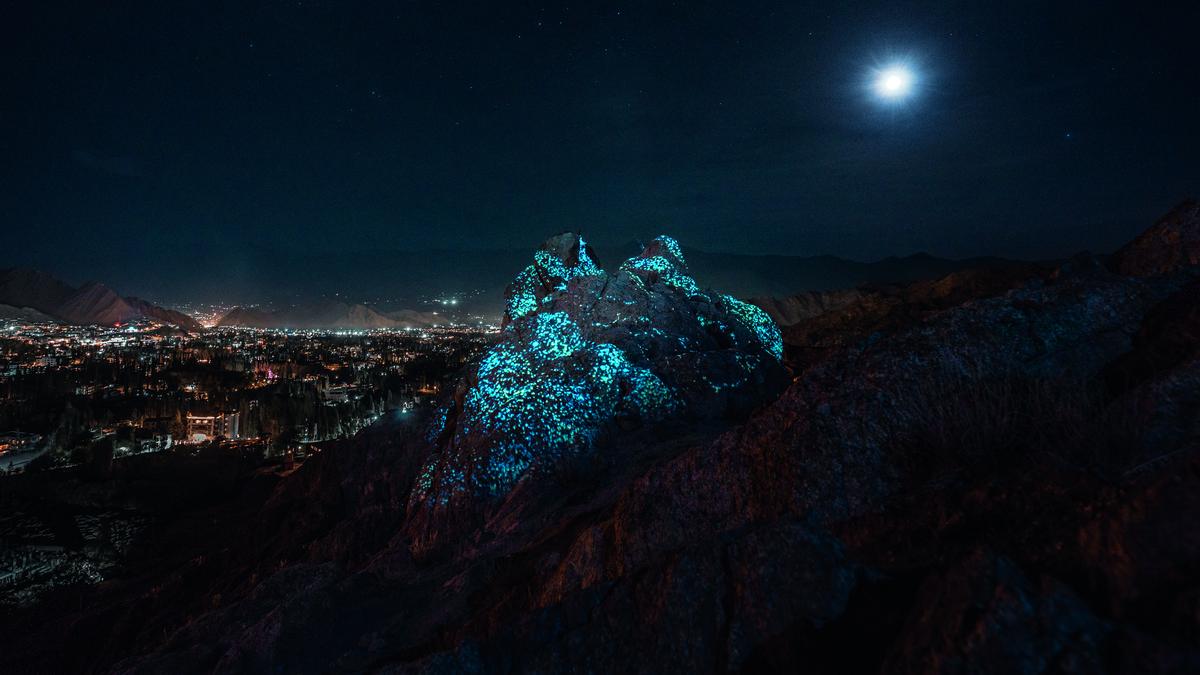
South Asia’s highest ‘land art’ festival set in Ladakh reflects on climate change
The Hindu
Experience interactive public art at sā Ladakh, South Asia's highest contemporary land art festival, featuring site-specific installations and sculptures
A carpet of fabric in a gradation of red, brown, and maroon spreads across a dirt road leading up to a barren mountain range. Close by, a cross-section of land lights up in blue fluorescence at night. If the last edition of sā Ladakh, South Asia’s highest contemporary land art festival, is anything to go by, interactive public art has found an effective format in the country: imagine art at an altitude of 3,500 metres.
As you read this, bamboo pillars are being erected in the 22-acre Disko Valley Bike Park in Leh, one of the highest in the country, as it prepares for the festival.
Here, Ladakh is not only the host but the subject too. This year’s edition, titled The Future of Immersive Land Art / Immersive Land Art and the Future, hosts site-specific art installations and sculptures crafted from locally sourced, discarded and renewable materials, with active participation from the local community.
Conceptualised one-and-a-half years ago by Ladakhi rock climber Tenzing ‘Jammy’ Jamyang, Austrian-Sri Lankan interdisciplinary artist Raki Nikahetiya, and Indian spatial designer Sagardeep Singh, the festival is a product of their love for Ladakh and land art .
“We all had individual reasons to love Ladakh. Jamyang is from here, Sagar worked here for a long time, and I grew up in Austria around mountain landscapes and visited here often,” says Raki.
Initially, Sagardeep and Raki wanted to collaborate on a land art project within the bike park, and on realising the scale decided to invite others as well.
“We wanted to do something about the environment, culture, and community. We also started thinking about how we can involve more Ladakhi artists, and so Ladakh Arts and Media Organisation joined in.” The cohort quickly expanded from three artists to 40 artists. While being a platform that spotlights Ladakhi artists who get little exposure outside, the project also aims to bring international attention to climate change and the awareness around it, not as activism but as “optimism.” Raki explains, “The idea is not to point fingers at whether one is doing it right or wrong, but to take a collaborative approach of artists reacting to a changing environment.”

nyone trying to slot Hong Kong filmmaker Ann Hui into a particular genre will be at a loss, for all through her 45 year-long career, she has moved easily between varied spaces, from independent cinema to the mainstream, from personal films to a bit of action too. For that matter, she has made a horror film too. Ask her about it and the 77-year old, who was conferred with the 29th International Film Festival of Kerala (IFFK)‘s Lifetime achievement award, says with disarming candour that she was just trying to see what she was good at.










